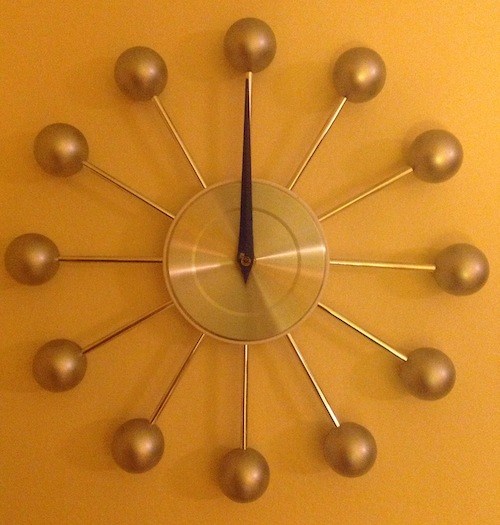In the thick of the holiday season last month, Griffin (9) turned his attention to the mythical midnight on New Year’s Eve.
Griffin (9 years old): Can we stay up until midnight on New Year’s Eve?

It is a nice touch that he includes his sister in this request. They may argue but they are a team.
Me: No.
G: We can when we’re 12.
At one point a year or two ago, he forced me to commit to the age at which he will be allowed to stay up to welcome the new year. The future me may be angry about the commitment I made, but for now it is paying dividends.
Me: Yes.
G: When I’m 12, I’ll get to stay up a lot later every night, since my bedtime is a half hour later every year. I’ll be able to stay up until….10.
Me: We’ll see about that.
Griffin restates his rule. I am pretty sure that I never endorsed this rule, but he is committed to it. I figure that I may as well exploit it.
Me: By your rule, what will your bedtime be when you’re 18?
G: Twelve to eighteen….so…three more hours…One o’clock!
Me: I should have asked about an odd number. How about when you’re 21?
G: Two-thirty in the morning.
Me: By your logic, what would have been your bedtime when you were 1?
G: Well, at 8 it was 8, so…4 hours…Four o’clock!
Me: I disagree. I don’t think it should be 4 hours from 8 to 1.
Griffin defends his answer.
G: It’s eight years, which is 4 hours.
Me: I don’t think 1 is 8 years younger than 8.
G: Oh. Yeah. Four thirty.
Then when I was 3, it would have been six o’clock.
He pauses thoughtfully.
G: Did I go to bed at six when I was three?
Me: I honestly don’t know. We make sure your bedtime matches your need for sleep.
So what do we learn?
This conversation exemplifies an important Talking Math with Your Kids principle—use whatever interests your children as an opportunity to talk about math. Another related principle is to use the conversation you don’t want to be having as a launching point for math talk.
I assure you that I am a relatively normal parent; I dread discussions of bedtimes. There is so much opportunity for whining, wheedling and comparisons to classmates. I understand that these classmates are mythical, but my children assure me that they all stay up later.
The key moment in this conversation was when I grabbed the bull (as it were) by the horns and asked him to apply his rule. What will your bedtime be when you are 18? That question got us talking about some good math, and it turned a potential power struggle into a fun conversation.
Using a rule to make a prediction is an important aspect of algebra. Griffin’s half hour later for every year older rule is a wonderful example of rates. I asked him to predict both forwards (what will be your bedtime when you are 18?) and backwards (what was your bedtime when you were 1?)
I missed two opportunities here.
It is a good idea to ask questions that make kids think in the opposite direction. So I should have asked something like How old will you be when your bedtime is midnight? This would force Griffin to think bedtime-to-age when he has been thinking age-to-bedtime.
The other missed opportunity is to play with the silliness of extending this rule too far. I could have asked, How old will you be when your bedtime is 8:00 p.m. again? If his bedtime keeps getting later, it’s going to come back around. Could he work out that this would require 48 years? Or would he reject the question as silly and put a limit on his rule? Either way, it’s a productive math talk to have.
Starting the conversation
Anytime your child wants to enter a negotiation, there is an opportunity to turn it into a math talk. How many M&Ms can I have for dessert? How many pumpkins can we buy? When can I stay up later? How many friends can I have at my sleepover? All of these and more are opportunities to ask what if questions involving rates, predictions, past and future quantities.
So don’t dread the negotiations. Take advantage of them!
